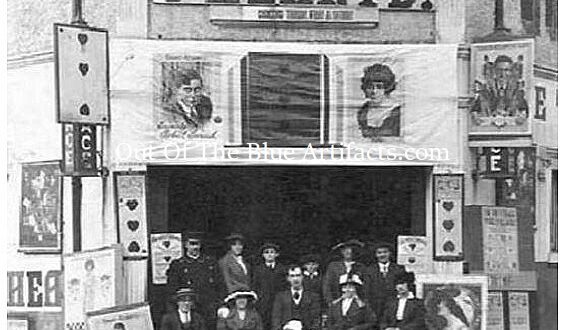The Picture Palace – Abertillery.
The Picture Palace, Abertillery, was situated at the junction of King Street and Carmel Street Abertillery.
The Building and Equipment Corporation Ltd.
In May 1911 a company called the Building and Equipment Corporation Ltd produced plans for a new picture palace which was to be built at Abertillery, the plans were presented to the council by Mr H. D. Blessley.
On Monday 30th of November 1911, the Building and Equipment Corporation Ltd held a meeting at Cardiff where they announced that the tender of Messrs W. Williams and Sons of New Tredegar for the construction of the proposed picture palace at Abertillery was accepted and that they would commence work on the building within the next week.
The Building and Equipment Corporation Ltd.
The company consisted of Mr J. E. Williams of Pengam (Managing Director); Mr H. G. J. Griffin, Stockbroker of Cardiff (Co-Director); Mr Percy Frowen of Messrs P. Wilson Raffan & Co Ltd Newport (Co-Director):
Staff Wanted.
In March 1912 the company advertised for a cashier, two female attendants and a pianist for the Picture Palace, Abertillery, references to Mr Percy Frowen Co Ltd of 19 Corn Street Newport.
The Construction of the Picture Palace.
The Picture Palace was built and showing pictures all within four-months! Its construction was even delayed as of the difficulty in getting heavy equipment into the town and through the narrow streets.
Description of the Building.
The seating capacity was for approximately 800 persons and it was reported that it was a place of entertainment for the people on a scale never before attempted outside of large towns. The chaste and elegant wall panelling’s, ceiling decorations, with handsomely upholstered seats were provided and the exquisite fittings was said to have been sufficient proof of the aim of the management to make the hall one of the best in South Wales. At this time, arrangements were being made to secure some of the best films available.
The Contractor and Architect.
The contractor was Messrs W. Williams and Sons of New Tredegar.
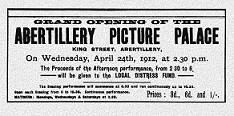 The Official Opening.
The Official Opening.
On Wednesday 24th of April 1912 at 2.30pm, the Picture Palace was officially opened. The first film shown at the Picture Palace was “The Run on the Bank” it depicted how a young girl, the daughter of the bank manager, together with her lover, saved her father from ruin by checking the run on the bank. At the close of the performance Mr T. A. Prichard proposed, and Mr J. Emlyn seconded a vote of thanks to the management. The turnout for the first showing on that day was not very good as the weather was so nice. The takings for the first day was £17. 1s. 9d. equivalent to £1,750,00 in today’s money. Because of the poor turn out for the afternoon showing the management decided to donate all of the day’s takings to the Local Distress Fund and not just the afternoons takings, as advertised.
Mr R. Cridland.
In November 1912 Mr R. Cridland was appointed pianist at the Picture Palace, Abertillery.
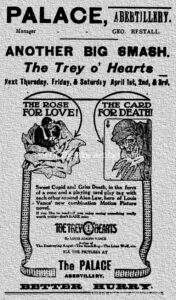 Trey O’ Hearts.
Trey O’ Hearts.
On Friday 26th of March 1915, the South Wales Gazette reported on the coming feature Trey O’ Hearts, (as seen right and in the main featured image above) it was advertised as coming to the Picture Palace, Abertillery. Trey O’ Hearts, by Louis Joseph Vance was stated as being a combination motion picture novel. It was first shown on Thursday 1st, Friday 2nd and Saturday 3rd of April 1915. It was later reported that the feature was shown in a series of instalments and would be screened as such at the Palace Cinema over the coming months.
Mr George Restall.
During the great war, Mr George Restall was the manager at the Picture Palace, Abertillery.
The Extension and Alterations Announcement.
In March 1926 it was reported that the proprietors of the Palace Cinema, Abertillery had some time ago purchased property that were adjoining the premises with the intention of extending the building. Plans were deposited with the Monmouthshire County Council of the alterations and extensions. It was stated the seating accommodation was to be doubled, the main entrance which was originally on the corner of King Street and Carmel Street (as seen in the main featured image above) would be moved to the other end of the cinema along Carmel Street. There were to be additional exits provided all around the building which was to be made completely detached. There was also a glass veranda planned to be put in place over the main entrance in Carmel Street to provide shelter for the queues. It was intended that the work was to be completed by August 1926 and the plans could be viewed in the window of Mr W. H. Hiley, auctioneer, Carmel Street, Abertillery.
The Tenders.
In May 1926 tenders were invited for the alterations and extension. The tenders were to be sent to Messrs W. Griffiths & Sons, Falcon Chambers, Llanelly.
The Extension and Alteration Postponement.
These alterations were later postponed, I am not sure why although plans were shelved for sixteen-months.
The Extension and Planned Alterations.
On Friday 22nd of July 1927, the South Wales Gazette reported on the extensive alterations were being carried out at the Palace Cinema, Abertillery. The newspaper report stated the alterations would increase the accommodation from 600 to 1,200. The seating on the ground floor were of the latest double type, the floor was being taken up with the gradient reversed and the screen placed the other end of the building giving an excellent view of the sheet from all parts of the picture house. The fire-proof operating box was to be repositioned at the centre of the gallery and the pictures projected at the correct angle. The old ceiling was removed with a new one placed in, raised and panelled in Upson Board, the board was distempered blue with white mouldings.
There were cloakrooms, lavatories and an emergency staircase exit built out of reinforced concrete. The new entrance, which faces east was built of local pennant stone with an imitation bath stone front which considerably adds to the appearance of Carmel Street. The vestibule was laid in terrazzo, all exit doors were fitted with panic bolts for use in an emergency and the old entrance used as an additional exit door. While the work was being carried out performances were still being shown. It was stated the work would be finished by October 1927.
The Contractor and Architect.
The contractors were Messrs W. D. Mills & Son, Abertillery, the architects were Messrs W. Griffiths & Sons of Llanhilleth.
Mr Charles Isaacs.
During the 1927 renovations Mr Charles Isaacs of Llanelly was the manager at the Picture Palace, Abertillery.
The Abertillery Theatres Limited.
In the late 1920’s all of the Abertillery Picture Houses were owned by the Abertillery Theatres Limited. The general manager of the company was Mr Albert Jackson Withers.
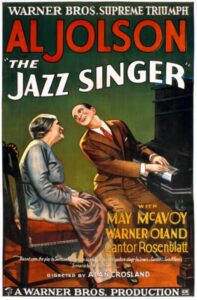 The First Talkie Movie Shown at Abertillery.
The First Talkie Movie Shown at Abertillery.
The first Talkie Movie the “Jazz Singer” released in October 1927, starred Al Jolson, May McAvoy, Warner Oland and Cantor Yossele Rosenblatt. It was first shown at the Picture Palace, Abertillery, during the last week of March 1929.
The Jackson Withers Company chose the Picture Palace, Abertillery for this film’s debut over the rest of the theatres in the area. Later in February 1930 the follow-up to “The Jazz Singer”, titled “The Singing Fool” also starring Al Jolson, with Josephine Dunn and Betty Bronson was shown at the Empress Picture Hall, Abertillery.
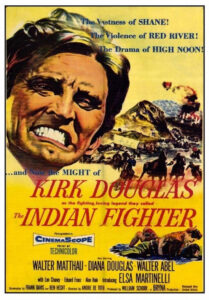 CinemaScope at the Palace Picture House.
CinemaScope at the Palace Picture House.
On Monday 17th of February 1958, CinemaScope was unveiled at the Picture Palace, Abertillery. The first film shown was “Indian Fighter” starring Kirk Douglas and Walter Matthau. The Picture Palace had been fully redecorated and re-seated, the new installation was described as CinemaScope with a 28′ x 14′ foot stereophonic screen.
Extra information on the Picture Palace, Abertillery was kindly provided courtesy of Mr Phillip Walkley.
Bingo Club.
During the early 1960’s bingo was introduced at the Palace, the Palace Bingo Club.
The Closure of the Palace Cinema.
The Picture Palace, Abertillery closed as a cinema in 1972 and the building was converted into a Bingo Club.
The Top Rank Club.
Throughout the 1970’s and into the 1980’s, the Palace Cinema building was known as the Top Rank Bingo Club.
Imperial Snooker Club.
In the late 1980’s the building was converted into the Imperial Snooker Club, a snooker club with a licensed bar, lounge and a hall containing sixteen snooker tables partitioned off from the lounge by glass panelling. It also had a small dancehall on an upper floor for disco’s etc.
It closed as a snooker club in the late 1990’s and turned into a night club, it was later known by such names as The Auberge, Hooters and The Arena.
The Closure and Demolition of the old Picture Palace Building.
The building closed as a licensed premises and was demolished in 2015 with the area being cleared. The council landscaped part of the old site with a large portion laid out and used as a carpark, accessed via Carmel Street.
 Out Of The Blue Artifacts A Library of a lifetime of collecting
Out Of The Blue Artifacts A Library of a lifetime of collecting
